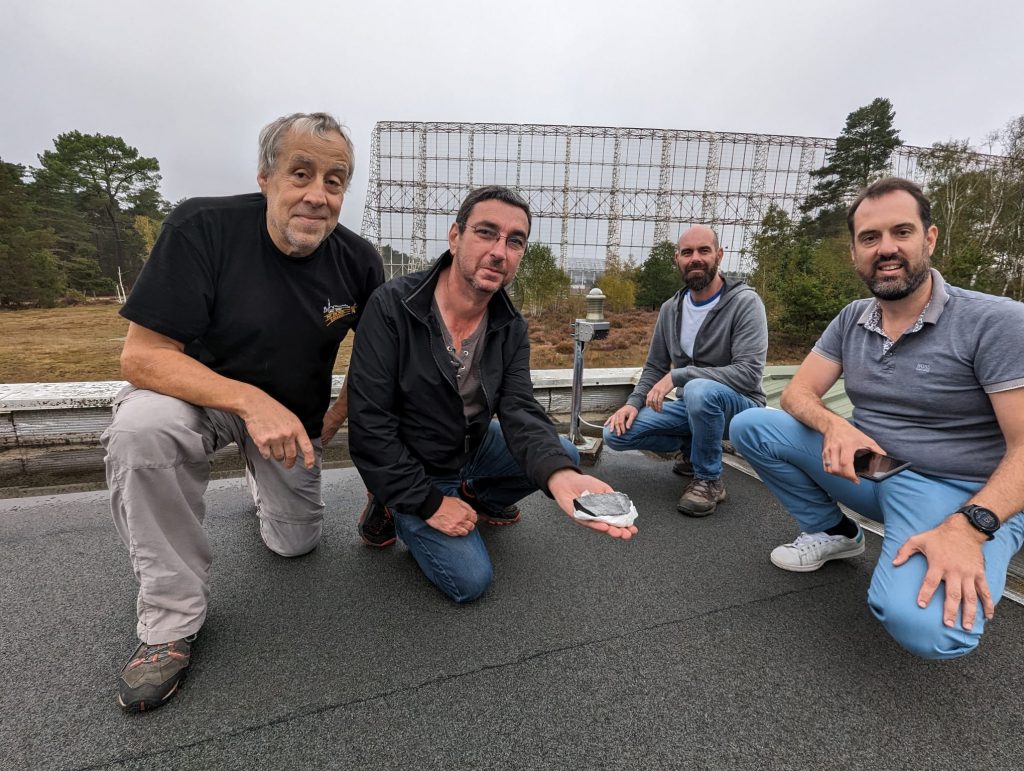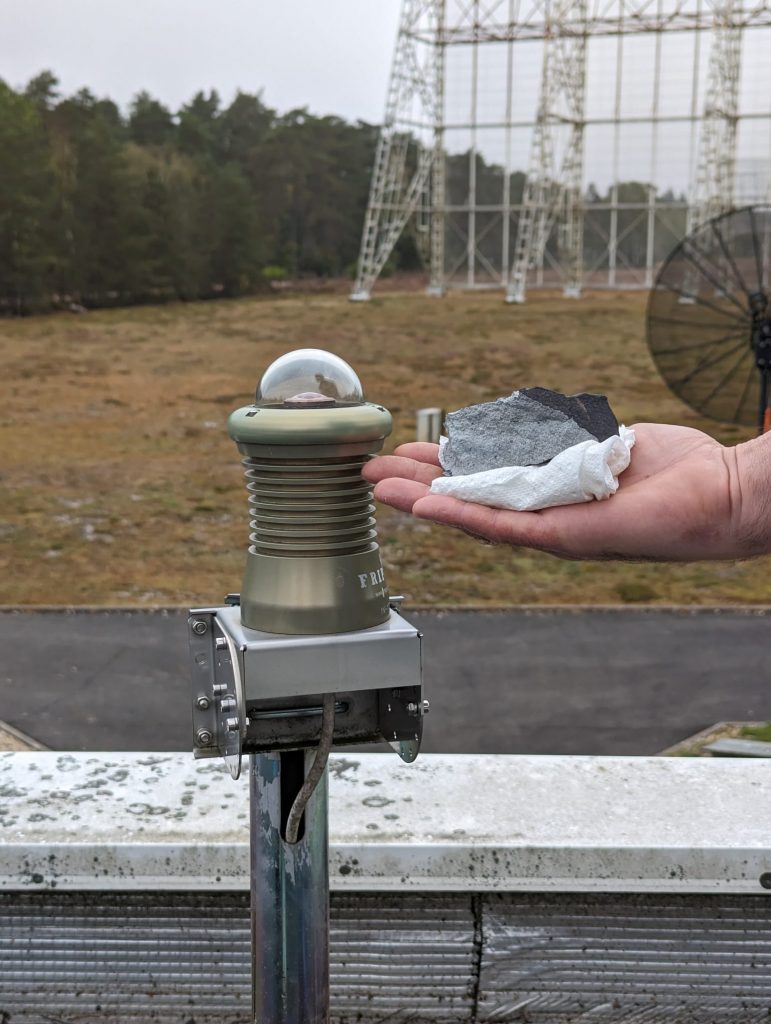A new meteorite has been recovered in France after a fireball was widely observed on the night of 9 September 2023 by FRIPON fireball cameras and eyewitnesses. A local resident of Sauldre et Sologne reported finding a potential meteorite on her property, which was later confirmed by experts. The meteorite recovery marks the second meteorite recovery in France this year.
On the night of 9 September at 22:13 hr UT (10 September 00:13 CEST), a magnitude -10 fireball lit up the skies above central France in the Cher region. The fireball was observed (and even heard) from a large part of France, from Normandy to Occitanie, and from the Atlantic coast to Alsace. Other eyewitnesses reported seeing the fireball from the United Kingdom, Germany, Italy, Luxembourg and Switzerland. Ten cameras from the FRIPON network recorded the fireball, which allowed various properties of the bright meteor to be determined.
According to preliminary calculations, the object originated from the outer regions of the asteroid belt (located between Mars and Jupiter). It entered the atmosphere and flew on a roughly South-North trajectory and a speed of 17 km/s. It was visible when it became visible in the atmosphere at an altitude of 80 km above the town of Lignières (Cher) and then travelled almost 70 km further north, ending at an altitude of 21 km above the town of Neuvy-sur-Barangon (Cher).
Meteorite reported by inhabitant
While experts from FRIPON were still finalising the detailed dark flight computations using FRIPON and other imagery, the team was alerted by the Pôle des étoiles in Nancay, who received the call of an inhabitant reporting a possible meteorite find. The initial assessment indicated it to be a meteorite of 714 grams. Members of the FRIPON/Vigie-Ciel team quickly went to the site to meet the finder (who wishes to remain anonymous), where they explained the phenomenon and answered her questions. At the end of this exchange, a fragment of the meteorite was entrusted to the National Museum of Natural History (Paris) for further scientific analysis (see images below).


